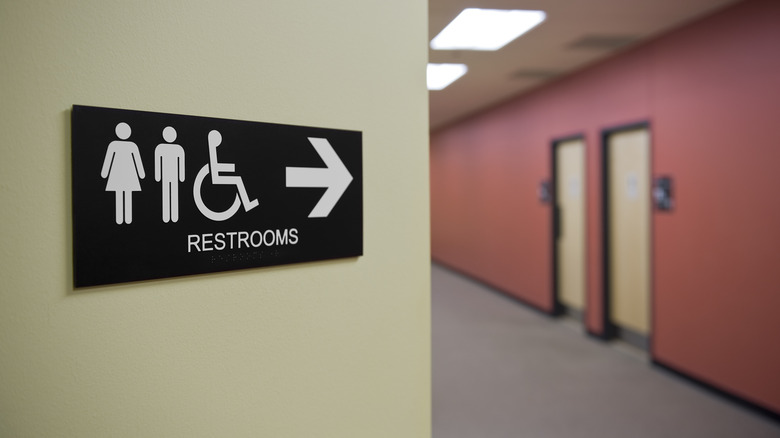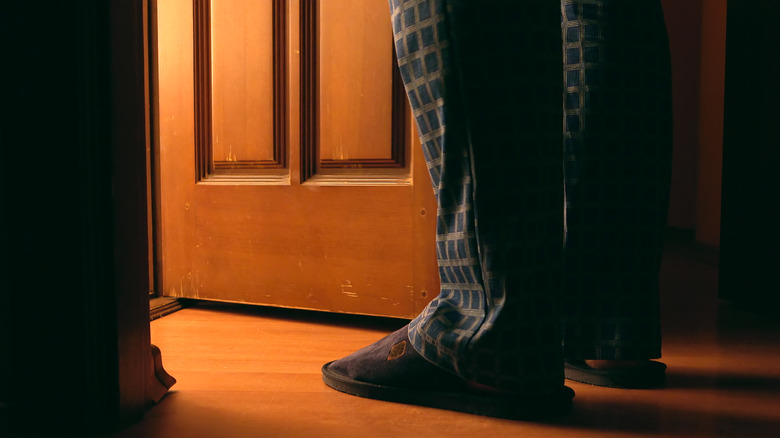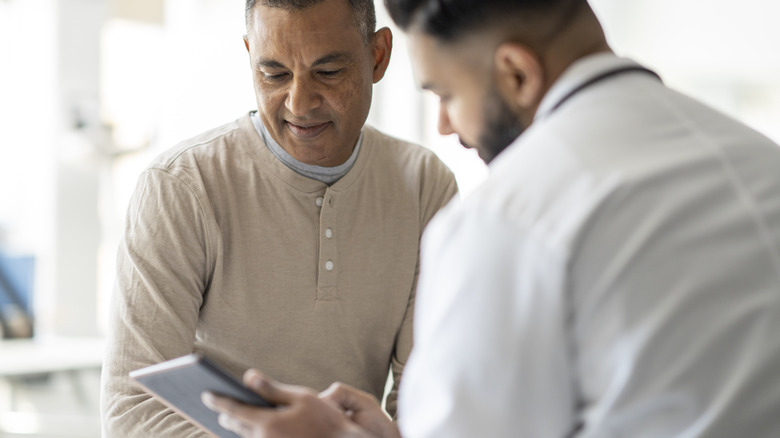What It Means When Men Experience After-Dribble When Peeing
After going number one, most men would feel a sense of relief. The urge to pee has finally passed, and you've gone from a feeling of uncomfortable fullness to a relaxed and empty bladder — or so you thought. Known as post-micturition incontinence (or more informally, after-dribble), the condition is characterized by a small amount of urine leakage that occurs after men have peed, the Continence Foundation of Australia explains.
The reason for this leakage is that the neighboring muscles around the urethra are not contracting as they should. As a result, the bladder isn't fully emptied after urinating, even if it may feel like it is. Research has shown that prevalence rates of post-micturition incontinence among males tend to vary around the world. In a 2019 scientific review published in Investigative and Clinical Urology, one regional study in the U.S. revealed a prevalence rate of 8.7%, while another study in China found that prevalence rates stood at 9.4%. An alternate Finnish study yielded a considerably higher prevalence rate, however, of around 58%. Here's what it might mean if you're experiencing after-dribble on a regular basis.
Experiencing after-dribble may mean a person has an enlarged prostate or weak pelvic floor muscles
In some cases, after-dribble may be indicative of an enlarged prostate, according to experts at Urological Associates. Beginning in one's 20s, the prostate never stops growing. In the event that the organ becomes too large to the point of causing urinary symptoms, such as after-dribble, this is known as benign prostatic hyperplasia (BPH).
Experiencing after-dribble could also mean that a person has a weak pelvic floor. In fact, researchers from the 2019 scientific review point out that having weak pelvic floor muscles is the primary factor associated with post-micturition incontinence. This muscle weakness can develop for a number of reasons and has been seen in connection with chronic coughing, being overweight, straining during a bowel movement, surgery, and engaging in routine heavy lifting in one's line of work. While the research is mixed, some studies have also linked after-dribble with erectile dysfunction.
How men can manage after-dribble
Some at-home methods for managing after-dribble include being mindful of how much water you're drinking, steering clear of alcohol or caffeine, maintaining a healthy weight, and practicing kegel exercises. This involves squeezing one's pelvic floor muscles (the muscles that stop the flow of urine), holding the muscles tight for 3 seconds, and then releasing for 3 seconds before repeating. Mayo Clinic experts advise doing three sets of 10 kegel exercises each day while varying your positioning over time, such as sitting, walking, or lying down.
The Continence Foundation of Australia adds that sitting on the toilet while urinating may also help prevent after-dribble. Additionally, try placing three fingers behind the scrotum and lightly pushing upwards and forwards to help facilitate the flow of urine through the urethra. Afterwards, shake or squeeze the penis and apply this pressure with your fingertips behind the scrotum two more times to help ensure there's no leftover urine in the urethra. If you're experiencing after-dribble, reach out to your doctor, especially if you're experiencing any additional urinary symptoms, such as difficulty peeing, a slow urine stream, nocturia, a burning sensation when peeing, or more. Once an underlying health condition has been ruled out, your doctor may alternatively suggest medication or surgery (via Urology Associates).



